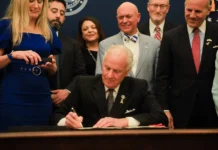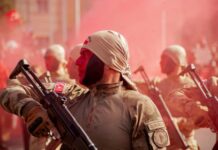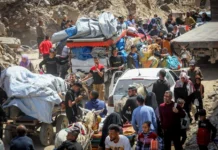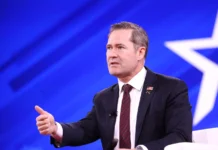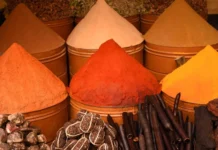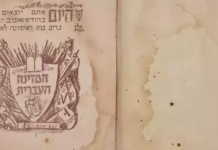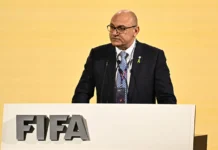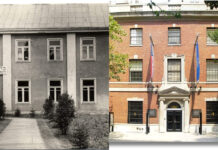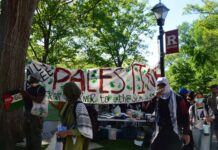Do you recall the Cedar Revolution?
Almost 20 years ago, the Lebanese rose against Syria’s domination of their country, including an occupation force of roughly 14,000 Syrian troops and a government that was all too eager to do Damascus’s bidding.
The Cedar Revolution slogan: “Freedom, Sovereignty, Independence.”
The Lebanese now have a chance to say those words again; to fight Cedar Revolution 2.0. To end the domination of Tehran and Hezbollah, the Islamist regime’s foreign legion, and those toadies who collaborate with them.
This opportunity is a gift from Israel. Are there Lebanese patriots with the guts and gumption to take advantage of it?
I’ll return to that question in a moment, but first a bit of context.
Lebanon is a beautiful land of forests, mountains and seashore. Its population is diverse. But diversity is not its strength.
From 1975 to 1990, Lebanon’s main ethnic and religious communities— Shia, Sunni, Maronite Christian, Druze—were embroiled in a bloody civil war.
Hezbollah was founded by the imperialist regime that came to power in Tehran in 1979, as the Lebanese branch of its Islamic Revolutionary Guard Corps (IRGC). Hezbollah has since murdered hundreds of Americans, dragged Lebanon into multiple conflicts with Israel and embroiled the country in Syria’s long civil war.
Hezbollah’s most recent conflict with Israel ended—or perhaps just paused—with a ceasefire agreement last week. More on that in a moment, too.
For centuries, the land we now call Lebanon was a possession of the Ottomans, Muslim imperialist settler-colonialists whose capital was in Istanbul.
That metropolis, you should know, was earlier called Constantinople and it was the capital of the Christian Byzantine Empire until the Ottomans conquered it in 1453.
When the Ottoman Empire collapsed following World War I, the League of Nations—the “international community” of the era—gave the French Empire a “mandate” to administer Lebanon and help it develop into a nation-state.
Lebanon formally received its independence in 1943, though French troops didn’t withdraw until three years later.
The political structure that Lebanon adopted might be called identitarian. Its goal was diversity, equity and inclusion through sectarian power-sharing: a Maronite Christian was always to serve as president, a Shi’ite as speaker of Parliament, a Sunni as prime minister.
But Hezbollah, with Tehran’s money, guns and support, came to overpower all the other sects and factions.
Both the 1989 Taif Agreement and the 2004 U.N. Security Council Resolution 1559 called for disarming Lebanese militias.
But Hezbollah’s leaders were not about to voluntarily lay down their weapons, and no one dared attempt to force them. Many Lebanese, mainly Shi’ites but not only Shi’ites, supported Hezbollah and Tehran for a variety of reasons.
In 2006, Hezbollah precipitated a war with Israel. After 34 days, under the newly passed U.N. Security Council Resolution 1701, the Israelis ceased firing and withdrew.
In exchange, Hezbollah was to pull out of southern Lebanon, from the Litani River to the northern Israeli frontier, under the supervision of the Lebanese Armed Forces (LAF) and the United Nations Interim Force in Lebanon (UNIFIL).
Instead, both the LAF and UNIFIL did nothing—or actively collaborated with Hezbollah, which has now spent almost two decades emplacing missiles in schools and mosques, building underground fortresses and storing chemical weapons.
All this was in preparation for a future invasion of Israel that was to be followed by massacres, hostage-taking and, if possible, the conquest of the Galilee and other northern Israeli territories.
Had this plan been carried out in coordination with Hamas’s invasion of Israel on Oct. 7, 2023, along with missile barrages from Iranian territory, and strikes by the Houthis in Yemen and Shia militias in Syria and Iraq, who knows how many Israelis might have been killed? Who knows whether Israel would have survived?
For reasons about which we can only speculate, that didn’t happen. But on Oct. 8, Hezbollah demonstrated solidarity with Hamas by firing missiles at northern Israeli communities. These strikes continued for more than a year. Tens of thousands of Israelis have had to abandon their homes.
Enormous numbers of Iranian missiles were launched against Israel from Iranian soil in April and October of this year, and sporadically by the Houthis.
Israel’s missile defense systems, augmented by American systems, minimized damage and, in response to Tehran’s attacks, Israel destroyed Iran’s air defense systems.
In September, the pagers carried by hundreds of Hezbollah operatives suddenly exploded. Days later, an Israeli airstrike killed longtime Hezbollah leader Hassan Nasrallah deep in his bunker.
The Israelis then proceeded to destroy hundreds of Hezbollah missiles, launchers and weapons caches. Most of the group’s senior leadership has now been eliminated.
The ceasefire the Biden administration arranged last week has left Israelis arguing among themselves.
Critics contend that it will allow Hezbollah to get up off the mat, and that it doesn’t ensure that displaced Israelis can return to their homes.
My reading is that, on balance, the Israelis come out ahead. President Biden was adamant to achieve a “diplomatic solution,” and the Israelis need a prompt resupply of American munitions. That now appears to be in train.
The Israelis are already responding forcefully to Hezbollah violations of the ceasefire.
And next month, President Trump will bring a new approach to the Tehran-fueled conflicts of the Middle East.
But back to the Lebanese. They now have a chance to remove the imperial yoke Iran’s rulers put around their neck and regain their freedom, sovereignty and independence. The LAF, long funded and trained by the United States, should at least attempt to disarm a crippled Hezbollah.
Lebanese patriots need to ask themselves two very Israeli questions: If not now, when? If not us, who?

